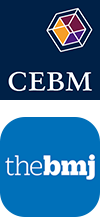



The first time I heard about ‘Evidence-Based Medicine’ was at 8:03 am on a cold November morning in my first year of medical school. The professor who ran our EBM course sighed as he discussed the course objectives: understand sensitivity and specificity, learn how to calculate a Number Needed to Treat, and be able to do critical appraisal of an RCT. At the time, all I could think about was that I should have had an extra coffee before showing up to class. The preponderance of empty seats made it clear that many of my colleagues had decided to avoid the situation altogether.
That was 5 years ago. In between then and now I went to graduate school, working with the Centre for Evidence-Based Medicine at the University of Oxford – the hosts, along with the BMJ, of Evidence Live 2015 and my outlook has completely changed on EBM.
It turns out that these skills – as dry as they initially sounded to my junior med student ears – are the fundamental building blocks of clinical practice. And the basics of EBM are important, but what it took me a long time to learn is that EBM is much, much more than calculations and algorithms for critical appraisal. EBM is about how to figure out what statin to prescribe and in whom to prescribe it. But it’s just as much about being able to help a patient decide to stop taking a statin, if their risk of cardiovascular events is low and they are experiencing side effects. It’s as much about identifying that a new chemotherapeutic agent is effective against a certain cancer as it is knowing when a patient would be better served by palliative interventions, focusing on quality of life.
The trouble is, though, that increasingly, EBM has come to mean something very different. As recently outlined in the BMJ (by several of our Evidence Live speaker faculty), EBM is in a state of crisis, having been co-opted for the good of corporations, rather than patients. Algorithms have replaced clinical reasoning at an alarming rate, leaving patients at the business end of whatever management-approved clinical pathway is available for their particular presentation. You can read more about the crisis facing EBM in their paper, entitled Evidence based medicine: a movement in crisis?
Now this is where you come in. As students and junior doctors, these problems are ours – this is the state of healthcare at the start of our careers. Think back to what healthcare looked like a generation ago; how many more effective treatments are available, how treatment for acute and chronic illness has completely changed.
What is our generation’s legacy towards healthcare going to be? What can we – indeed, should we – do to get EBM, and by extension all of healthcare, back on the right track?
Evidence Live 2015 offers reduced-rate places to students and junior doctors, and all you have to do is write a 300 word response to the following question:
“What is the most important intervention/change/idea required to ‘fix’ Evidence Based Medicine over the next 10 years, and how should it be implemented?”
Further details are available on the Evidence Live website. The top 3 medical student submissions will be featured in the Student BMJ in mid-2015.
Come join the conversation, and join us in Oxford in April.